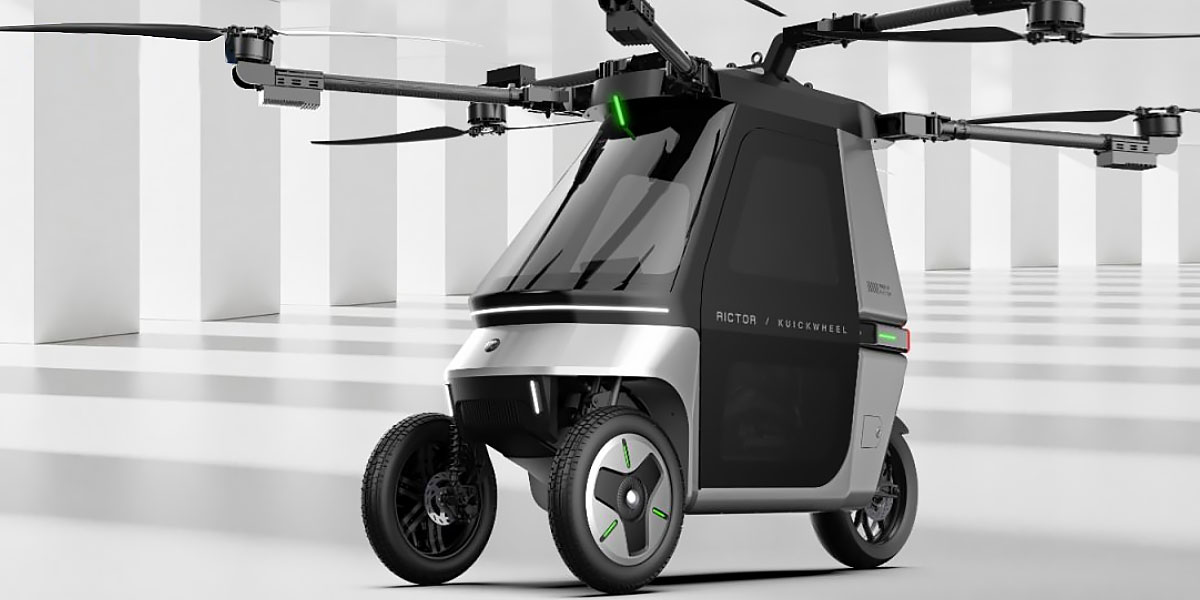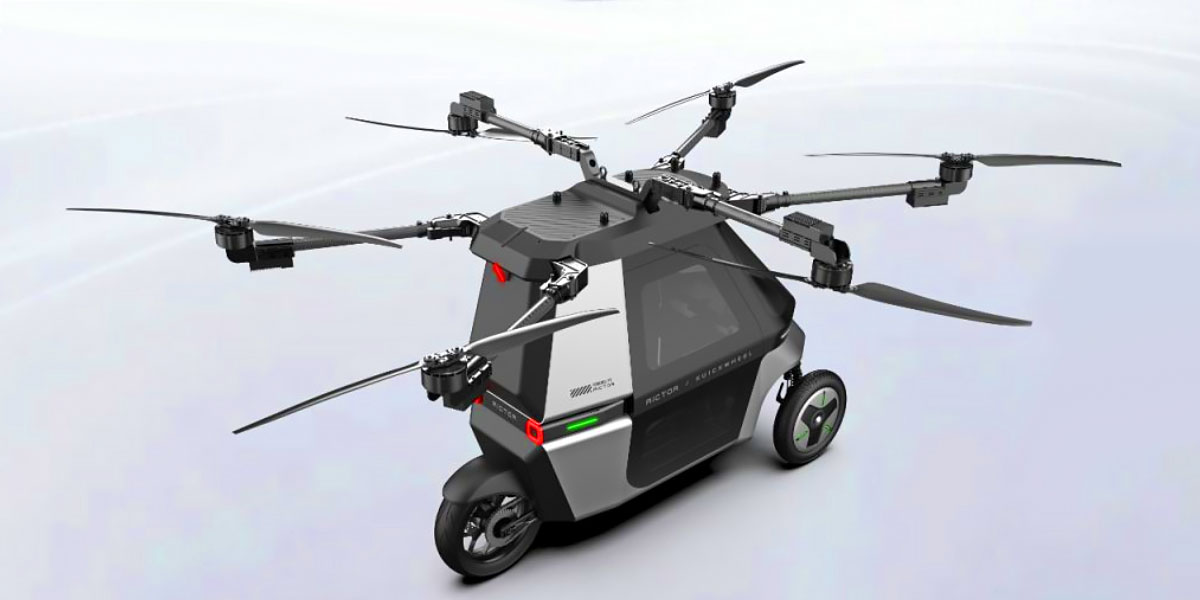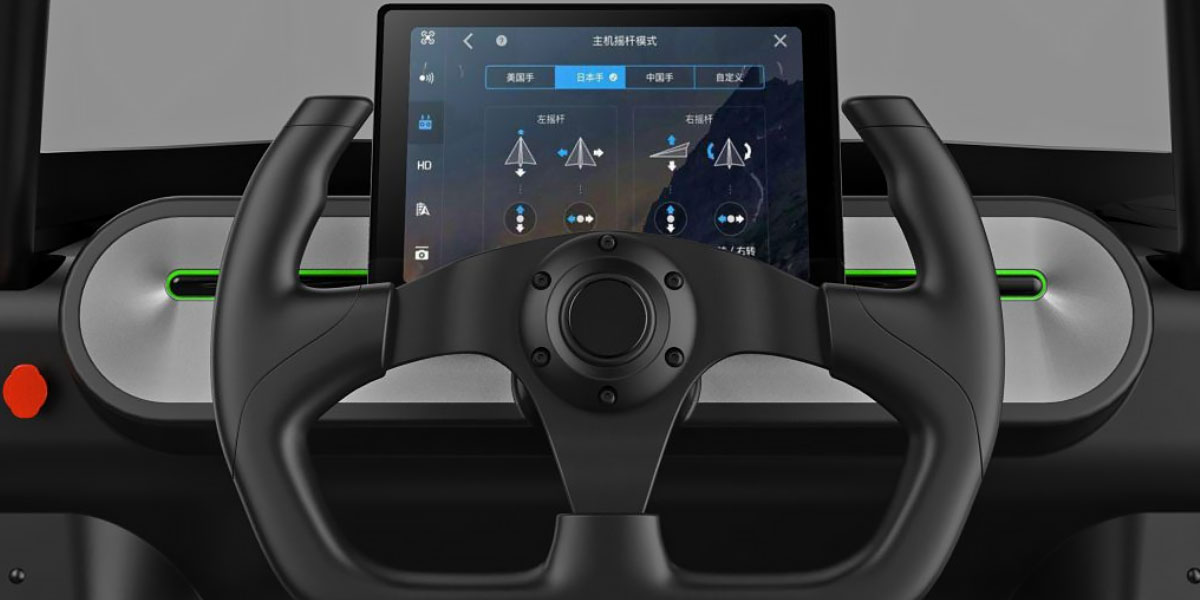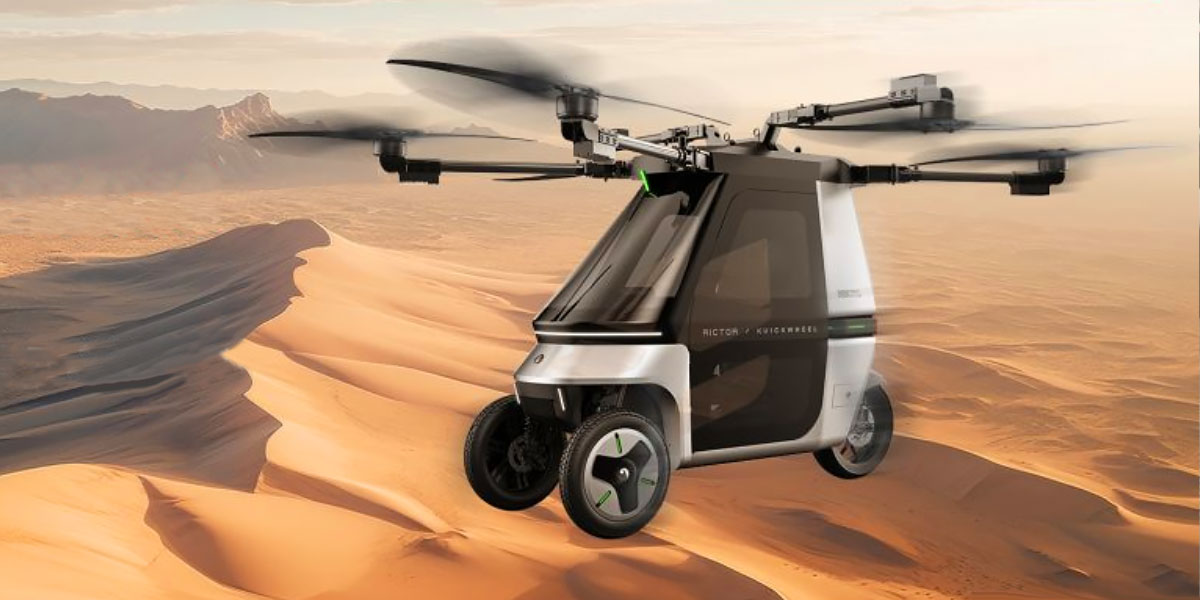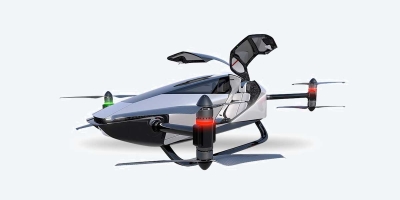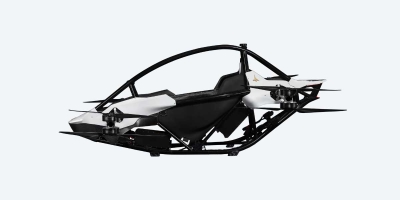Kuickwheel Skyrider X6
User Rating: 3.70 / 5





What is the Kuickwheel Skyrider X6?
The Skyrider X6 is a dual-mode eVTOL flying motorcycle developed by Kuickwheel, launching in 2026. Priced at $70,000 (€65,100 / £55,300), it offers 200 km (124 mi) road range, 25 km (15.5 mi) flight range, 72 km/h (45 mph) top speed, and AI-powered autonomous flight.
Kuickwheel Skyrider X6 price:
US$ 70000 *
| manufactured in | China |
| model year | 2026 |
| flight altitude (m) | 2000 |
| flying time (min) | 40 |
| road range (km) | 200 |
| flying range (km) | 25 |
| max. speed (km/h) | 72 |
| weight (kg) | 200 |
| passengers (qty) | 1 |
| cargo capacity (kg) | 120 |
* Minimum price set by the manufacturer, excluding taxes and additional options
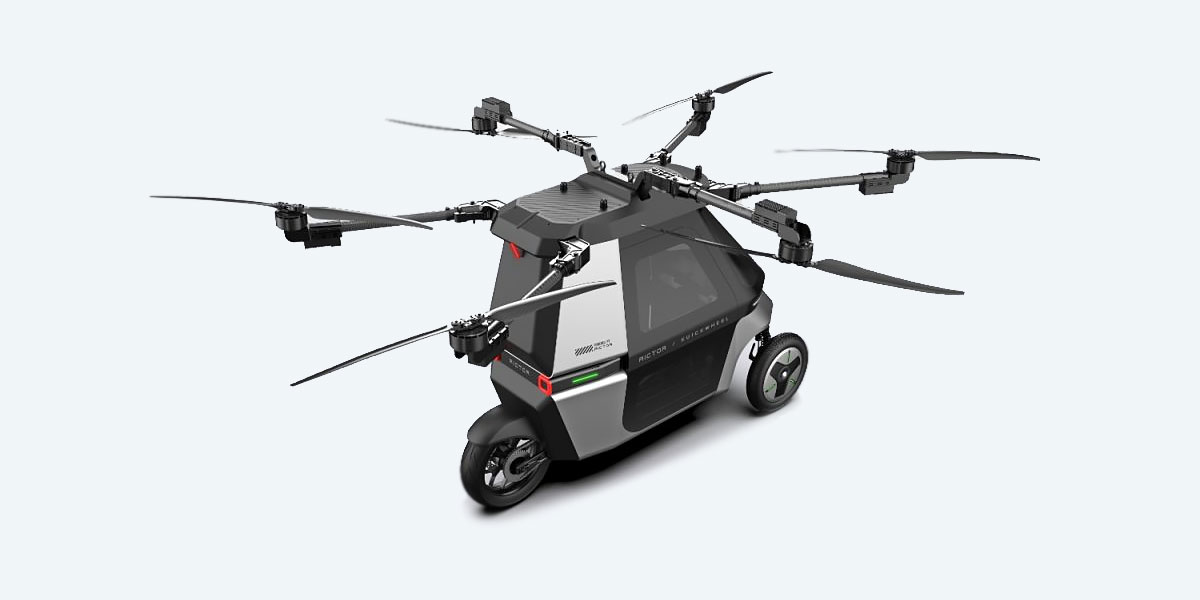
Exterior and Interior photos of Kuickwheel Skyrider X6
Kuickwheel Skyrider X6 Review
Skyrider X6: The Flying Motorcycle Aiming for City Skies and Streets
The Skyrider X6 takes a swing at the personal flight category like few others have dared. Cooked up by Kuickwheel in China and penciled by the design minds at Rictor, it’s half electric trike, half aerial drone—and all ambition. Scheduled for a 2026 rollout, this one-seater eVTOL is aimed at urban explorers and commuter daredevils. With a price tag of $70,000 (€65,100 / £55,300), it walks the tightrope between premium innovation and early adopter accessibility. It’s built to cruise city streets at 70 km/h (43 mph) or soar above them at 72 km/h (45 mph), bridging the air-ground gap with the twist of a throttle.
- Designed by Rictor and manufactured in China by Kuickwheel for release in 2026.
- Priced at $70,000 (€65,100 / £55,300), targeting the premium eVTOL enthusiast.
- Offers seamless dual-mode transportation for ground and air navigation.
- Aims to redefine urban mobility with personal flying capability.
Skyrider X6 Specs: A Dual-Mode Ride That Takes Flight
Battery
Powering both street sprints and sky hops, the Skyrider X6 runs on a 10.5-kWh battery pack with fast-charge functionality. From zero to full juice takes about one hour via DC charging—enough time for a quick meal or drone-charging envy scroll. That same battery supports 25 km (15.5 mi) of flight or up to 200 km (124 mi) of road time. Efficiency isn’t just baked in—it’s the whole recipe. Whether you're grounded or airborne, the smart battery management system keeps energy flow and thermal stability in check, so there’s no mid-air hiccup.
- Battery: 10.5 kWh lithium pack
- Flight range: 25 km (15.5 mi)
- Ground range: 200 km (124 mi)
- Charging: Full charge in 1 hour
Performance
Street mode maxes out at 70 km/h (43 mph), aligning it with high-end electric scooters. Flip to flight, and you get 72 km/h (45 mph) cruising in the sky with a runtime between 25–40 minutes depending on altitude, battery state, and payload. This electric flying trike weighs in at just 200 kg (440 lb), and it can haul up to 120 kg (265 lb) of cargo—more than enough for a rider with gear or a compact delivery package. Vertical takeoff via six rotors takes about 30 seconds and doesn’t need a runway. This makes it downright practical for rooftop-to-rooftop or suburban backyard liftoffs.
- Top flight speed: 72 km/h (45 mph)
- Ground speed: 70 km/h (43 mph)
- Flight time: 25–40 minutes
- Weight: 200 kg (440 lb)
- Cargo capacity: 120 kg (265 lb)
Max flight altitude peaks around 2,000 meters (6,562 feet), keeping it well within Class G airspace, and therefore less restricted for urban trials and future pilot programs.
Exterior and Interior: Design That Turns Heads on Every Axis
Exterior
Let’s not pretend this thing doesn’t turn heads. The Skyrider X6 resembles a UFO’s younger cousin with stabilizing tricycle wheels and folding rotors that tuck in when grounded. The build combines carbon fiber and aerospace aluminum for a weight-saving structure that stays rigid in flight. It’s compact enough to nest in city garages and launch from tight clearings, and the wheelbase ensures stability even during aggressive cornering or touchdown maneuvers.
Interior
This isn't a limo cabin—it's a one-seat cockpit that’s equal parts futuristic and functional. The digital flight panel shows nav, diagnostics, and weather in real-time. There’s also a joystick for those itching to pilot manually. While storage is slim, it compensates with visibility and comfort. Think helmet, jacket, and one brave soul ready to ride the air.
Pros and Cons of the Skyrider X6
Pros
- Dual-mode operation: Road and air travel
- Fast charge battery supports flexible use
- Flight system designed for non-pilots
- Compact, urban-friendly dimensions
- Solid cargo capacity for a one-seater
Cons
- Limited flight range restricts cross-town trips
- Looks may divide traditional motorists
- Flight speed trails more advanced eVTOLs
Conclusion: Skyrider X6 Brings Sci-Fi Commute Closer to Reality
The Skyrider X6 isn’t here to play safe—it’s here to offer a ticket to the sky. With 200 km on the ground, 25 km in the air, and a price under $70K (€65,100 / £55,300), it dares to disrupt the city commute, one vertical liftoff at a time.
Manufacturer: Kuickwheel Technology
Related Video
Comparison:
Stacked against the rising class of urban eVTOLs and flying scooters, the Skyrider X6 brings something unique to the launch pad—it's street-smart and sky-ready. But how does it fare against tech-forward competitors like the Jetson ONE, Ryse Recon, XPeng X2, and Hoverbike S3?
Range
The Skyrider X6 offers a dual profile: 200 km (124 mi) on the ground and 25 km (15.5 mi) in the air. The Jetson ONE provides only 20-minute flights (~15 km or 9.3 mi), and Ryse Recon hits similar figures. XPeng X2 pushes to 35 minutes airborne, while Hoverbike S3 trails with 20 km (12.4 mi) air range. In road mode, Skyrider clearly leads.
Acceleration
While official 0–60 specs are scarce across the segment, the Skyrider X6's land mode offers decent electric scooter-style punch. Jetson ONE and XPeng X2 prioritize vertical thrust over land speed, but none offer dual-mode propulsion like the Skyrider.
Power
The Skyrider X6 uses a 10.5 kWh battery system, giving it a strong backbone for both ride and flight. The XPeng X2 features a larger battery pack (~16 kWh), while Jetson ONE comes with 3 batteries totaling around 8.8 kWh. Ryse Recon and Hoverbike S3 fall behind in stored energy and runtime stability.
Charging Time
Charging to full in one hour, the Skyrider X6 leads the pack. Jetson ONE takes 2 hours+, XPeng X2 varies based on infrastructure, and Ryse Recon requires similar times. Quick recharge matters in urban operation—Skyrider nails it.
Price
At $70,000 (€65,100 / £55,300), the Skyrider X6 undercuts XPeng X2 (~$140,000), Hoverbike S3 (~$150,000), and even Jetson ONE (~$92,000). Ryse Recon is similarly priced (~$150,000), giving Skyrider the clear affordability edge for private flyers and early adopters.
F.A.Q.:
What is the battery capacity?
The Skyrider X6 is powered by a 10.5 kWh battery designed for dual-mode performance on ground and in air. It supports both rapid charging and stable energy output during flight.
How far can it travel on a single charge?
On land, the Skyrider X6 covers up to 200 km (124 miles), while its air mode offers a flying range of up to 25 km (15.5 miles) depending on conditions.
What is the maximum speed?
The Skyrider X6 reaches a top speed of 72 km/h (45 mph) in flight and about 70 km/h (43 mph) in ground mode, making it suitable for short-range urban travel.
How long does it fly?
The vehicle can stay airborne for 25 to 40 minutes depending on weather, altitude, and battery condition. This is ideal for short hops or bypassing heavy traffic zones.
What is the price of the vehicle?
The Skyrider X6 is priced at $70,000, which equals approximately €65,100 or £55,300 based on current exchange rates.
What is the cargo capacity?
The Skyrider X6 can carry up to 120 kg (265 lbs), making it viable for personal transport and small payloads like parcels or gear.
How heavy is the vehicle?
The Skyrider X6 weighs 200 kg (440 lbs), optimized for agility in flight and balance during land travel, thanks to its carbon fiber and aluminum frame.
Do I need a pilot’s license to fly it?
Though designed for non-pilots with AI-assisted controls, regulations may vary by country. You may need certification or training depending on local airspace rules.
How fast does the battery charge?
The 10.5 kWh battery reaches full charge in about one hour using a DC fast charger, minimizing downtime between flights or rides.
Is it road-legal in most countries?
The Skyrider X6 is expected to be street-legal as a three-wheeled electric vehicle, though local approvals and eVTOL certification will vary.

